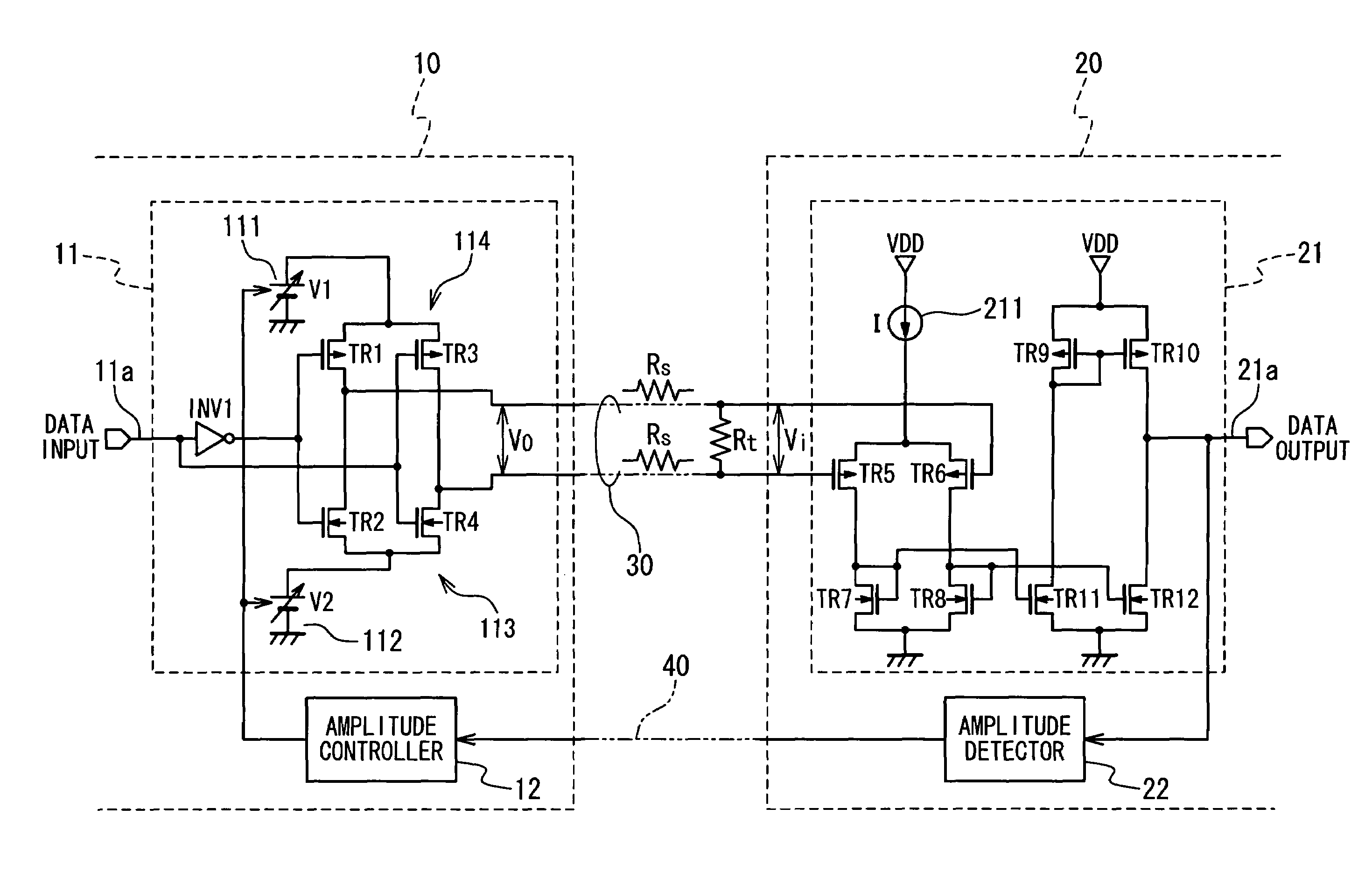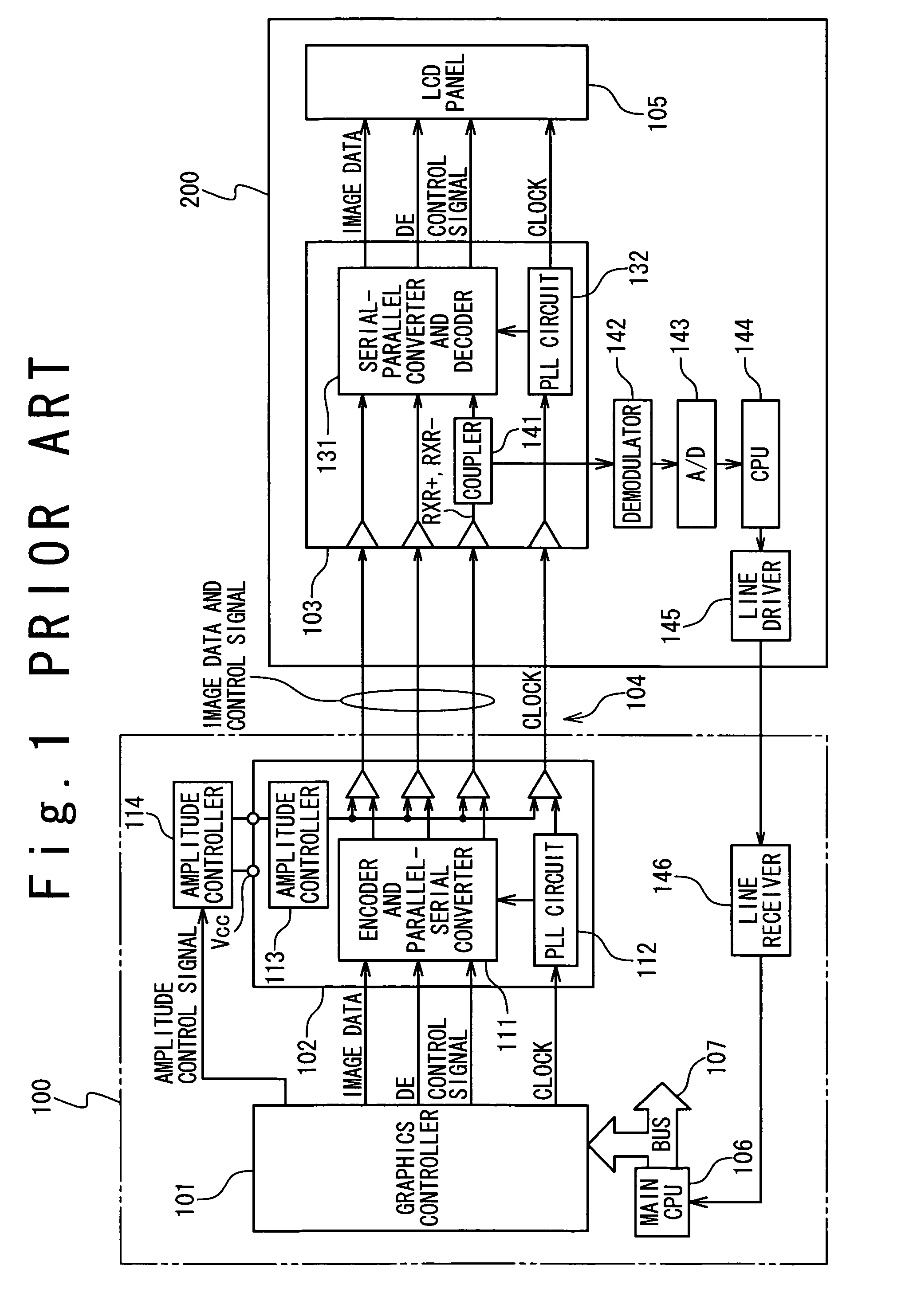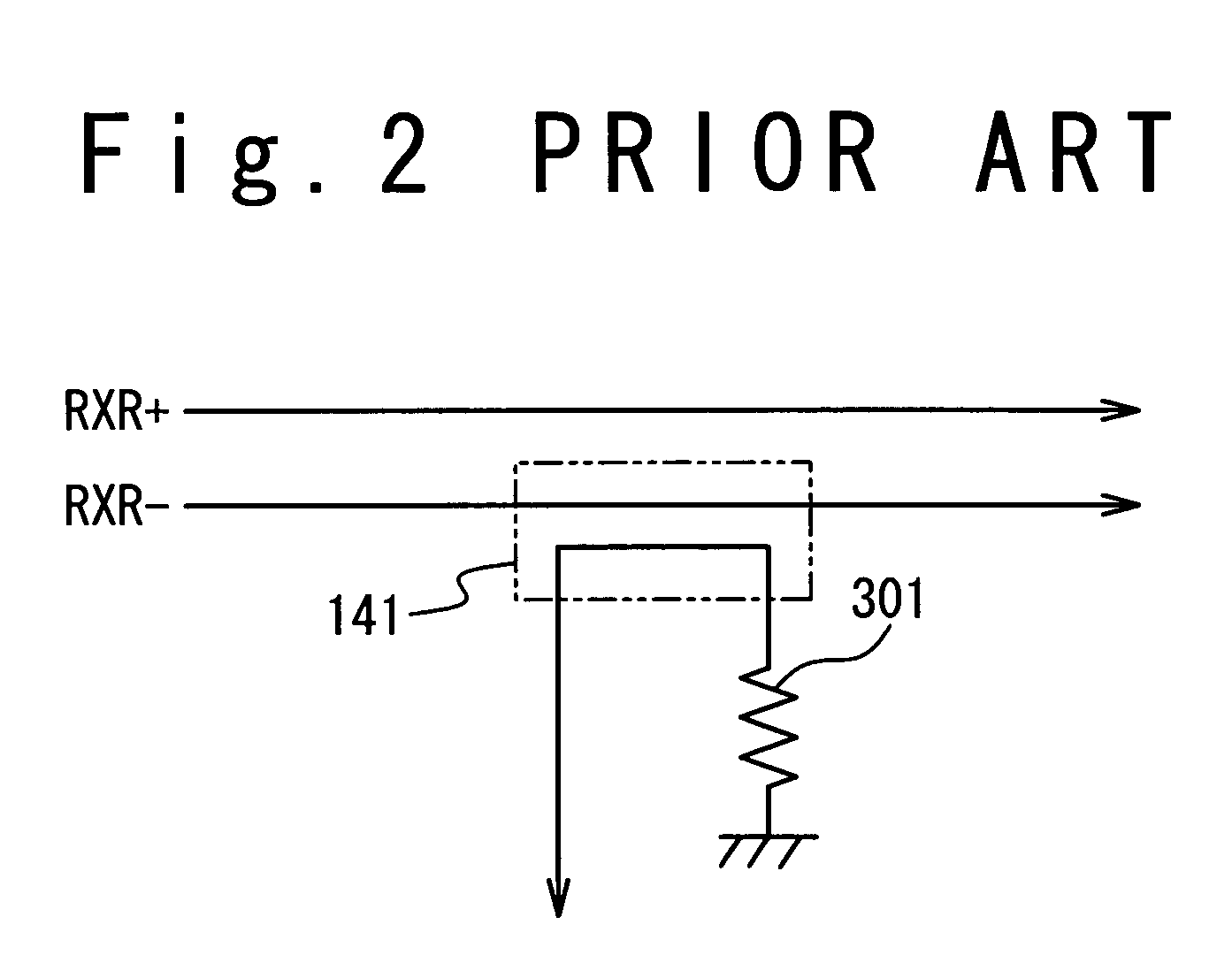Data transfer apparatus for low voltage differential signaling
a data transfer and differential signaling technology, applied in the direction of dc level restoring means or bias distortion correction, receiver monitoring, pulse technique, etc., can solve the problems of undetectable increase in signal loss, etc., to improve simplify the circuit configuration, and improve the effect of the feedback control of the amplitude of the lvds signal
- Summary
- Abstract
- Description
- Claims
- Application Information
AI Technical Summary
Benefits of technology
Problems solved by technology
Method used
Image
Examples
first embodiment
[0039]In a first embodiment, as shown in FIG. 3, a data transmission apparatus is composed of a transmitter 10, and a receiver 20. The transmitter 10, and the receiver 20 are connected through a transmission line 30 including a pair of twisted signal lines. A feedback signal line 40 is additionally interposed between the transmitter 10, and the receiver 20.
[0040]The transmitter 10 includes an output buffer 11 and an amplitude controller 12. The output buffer 11 generates a differential signal in response to a transmission data signal 11a inputted thereto. The amplitude controller 12 controls the amplitude of the differential signal generated by the output buffer 11 in response to a feedback signal received from the receiver 20 through the feedback signal line 40.
[0041]The receiver 20 includes an input buffer 21 and an amplitude detector 22. The input buffer 21 receives the differential signal from the transmitter 10 through the transmission line 30, and converts the received differe...
second embodiment
[0069]FIG. 7 is a circuit diagram illustrating a structure of a data transmission apparatus in a second embodiment. The data transmission apparatus in the data transmission apparatus is comprised of a transmitter 10′ which includes an open-drain type output buffer 51 in place of the output buffer 11 shown in FIG. 3. Additionally the transmitter 10′ includes an amplitude controller 12′ providing a set of amplitude control signals C0 through C2 for the output buffer 51. The output buffer 51 includes first and second drivers 512 and 513, and first and second selectors 513 and 514 connected to the first and second drivers 512 and 513, respectively.
[0070]Each of the drivers 512 and 513 is composed of a plurality of n transistors having different drive capabilities; n is an integer equal to or more than 2. It should be noted that the term “drive capability” of a specific transistor means that the maximum current through the transistor when the transistor is turned on. The drive capabiliti...
PUM
 Login to View More
Login to View More Abstract
Description
Claims
Application Information
 Login to View More
Login to View More - R&D
- Intellectual Property
- Life Sciences
- Materials
- Tech Scout
- Unparalleled Data Quality
- Higher Quality Content
- 60% Fewer Hallucinations
Browse by: Latest US Patents, China's latest patents, Technical Efficacy Thesaurus, Application Domain, Technology Topic, Popular Technical Reports.
© 2025 PatSnap. All rights reserved.Legal|Privacy policy|Modern Slavery Act Transparency Statement|Sitemap|About US| Contact US: help@patsnap.com



